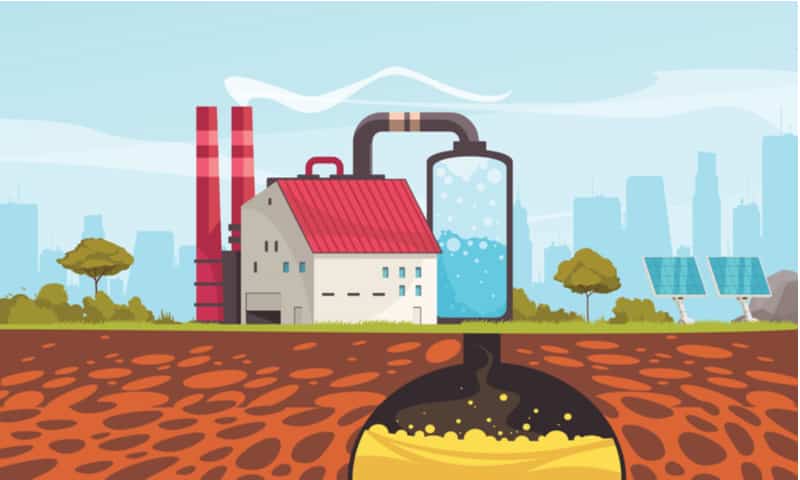As pressure mounts to tackle climate change, the Danish Novo Nordisk Foundation has granted €84.7M to the world’s first research institution dedicated to capturing carbon dioxide from the air and harnessing the gas as a raw material.
The new Novo Nordisk Foundation CO2 Research Center has the mission to efficiently capture, store, and recycle the greenhouse gas carbon dioxide (CO2). The research will focus on employing microbes and electrochemistry to turn the gas into components for fuel and plastic.
The center will be set up at the University of Aarhus this autumn with the help of an €84.7M grant from the Novo Nordisk Foundation. The grant will be paid out over the next seven years and additional contributions will be sought from organizations such as the Innovation Fund Denmark and the EU.
Pasi Vainikka, CEO of Finnish biotech Solar Foods, who wasn’t involved in the project, welcomed the new institute’s recognition of CO2 as a vital raw material. Solar Foods produces the natural protein Solein from microbes using only air and electricity.
“CO2 will replace almost all material use where oil is used today. Basically in plastics, chemicals, medicine, and some fuels,” Vainikka predicted. “We have had so many bioeconomy and biotech centers on the planet, but no CO2 center, even if it is THE commodity of this century.”
By the end of the grant’s seven-year period, the center aims to have launched major collaborations with industrial partners, with candidates including Danish carbon reduction technology company Haldor Topsøe, global industrial biotech Novozymes, biogas producer Nature Energy, and the shipping company MAERSK.
According to Senior Vice President of Biotech and Professor at the Novo Nordisk Foundation, Claus Felby, the greatest current limitation to carbon capture is operating it at a large scale.
“The center will start with the lowest hanging fruits, which are the many point sources of emissions – for example from the industry and the energy sector,” he told me.
“The technological capture solutions for these point sources are already available, but they need to be developed and made more efficient and more profitable.”
“As a second part of its work, the center will start to develop ways of capturing CO2 from the atmosphere. This will pose a greater challenge since the methods in this field are not as well developed yet.”
Interest in carbon capture and recycling has recently surged due to increased public concerns over climate change, increasing pressure on world leaders to combat harmful greenhouse gas emissions. The EU with last year’s Green Deal became one of the frontrunners in the quest to nurture a bio-based economy that could lead to a circular economy in Europe.
Direct air capture (DAC) of CO2 from the atmosphere is currently being explored by a number of different organizations and has already been demonstrated on a relatively small scale.
“Both DAC and synthetic fuels and chemicals based on CO2 offer promise, but both technical and commercial progress will need to be made before they reach maturity,” said Tom Houghton, Principal Consultant at sustainable energy consultants E4tech, an ERM Group company.
Things are moving in the right direction nonetheless. In July, Canadian cleantech company Carbon Engineering partnered with the synthetic biology firm LanzaTech UK to set up a UK facility to produce more than 100 million liters of sustainable jet fuel each year.
The project, which includes input from aviation companies British Airways and Virgin Atlantic, aims to extract atmospheric CO2 and use microbes to turn it into low-carbon ethanol, which will then be converted into sustainable aviation fuel.
Last month, meanwhile, saw Swiss-based Climeworks launch Orca, the world’s largest carbon capture and storage plant in Iceland. The EU-backed facility will use geothermal energy to capture 4,000 tons of CO2 per year, which will be mixed with water, pumped underground, and trapped in stone through a natural mineralization process that takes less than two years.

Senior Research Fellow Ajay Gambhir at Imperial College London’s Grantham Institute for Climate Change and the Environment highlighted the importance of using captured carbon dioxide this way – for example through conversion into fuel using microorganisms.
“Such fuels could in theory provide a very low-carbon alternative to fossil fuels like jet fuel, allowing harder to decarbonize sectors like aviation play their part in the transition towards net zero,” he said.
Several multinationals are now committing to becoming net zero, where greenhouse gas emissions are matched with their removal from the air. French food giant Danone, German car manufacturer Mercedes-Benz, and British consumer goods company Unilever have all pledged to transition to a net zero economy by 2050. Microsoft has gone even further, promising last year to be carbon negative by 2030.
The impetus for action is compelling, with climate change already risking global health, livelihoods, food and human security, water supply, and economic growth.
While the latest UN Emissions Gap Report shows a brief dip in CO2 emissions as a result of the Covid-19 pandemic in 2020, levels of greenhouse gases in the atmosphere – which also include chemicals such as methane and nitrous oxide – continued to rise.
The landmark Paris agreement in 2015 set a goal to keep global temperature increases this century to less than two degrees centigrade compared to pre-industrial levels. But human activity has already caused a single degree increase in global temperature, with this likely to reach 1.5 degrees centigrade by 2052 if it continues to increase at the current rate.
Gambhir told me that current scenarios that limit global warming to below two degrees Celsius, as required by the Paris Agreement, heavily rely on carbon capture in some way, such as synthetic storage and planting trees.
“While the more that we reduce emissions in the near term, the less we would have to rely on longer-term carbon removal, it’s important to recognize that we should be developing a range of these carbon removal technologies, as well as supporting nature-based solutions,” said Gambhir.
”In the latter case, these may be cheaper than synthetic solutions, but may not be able to scale to the levels required in the long term.”
A major way to accelerate the advancement of carbon capture technology globally will be synchronizing research across many nations. For Hans Schambye, Chairman of the Danish industry organization Dankse Biotek, one key element to the Novo Nordisk Foundation CO2 Research Center will be its six satellite institutions, including the University of Tübingen in Germany and Stanford University in the US.
“We’re excited by the establishment of a center that is anchored in Denmark, but with important satellites in other countries,” said Schambye. “International collaboration is key to any progress in the fight against climate change.”
This article was updated on 4 October 2021 to correct the spelling of the company name E4tech. Cover image via Elena Resko. Text image via Shutterstock.





